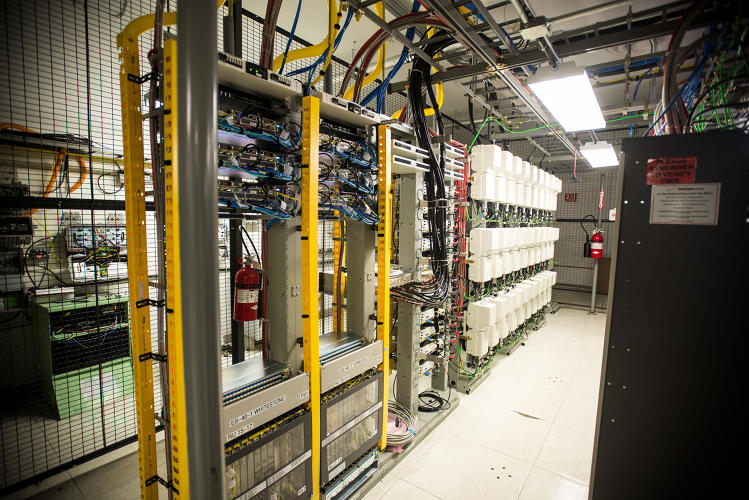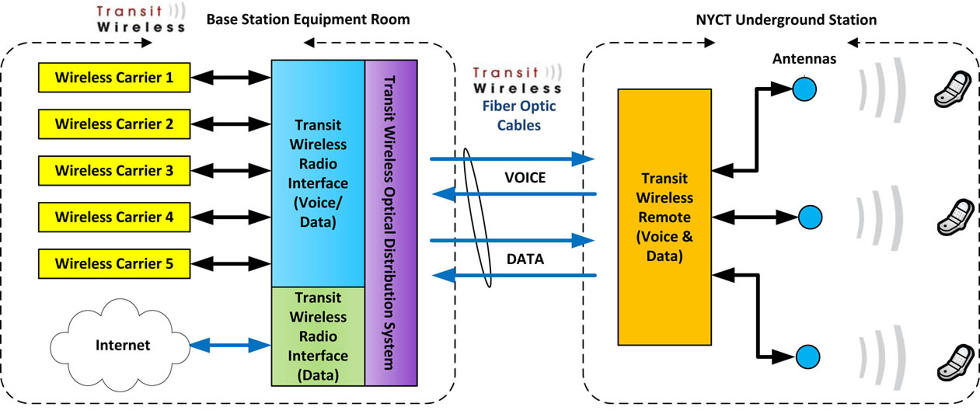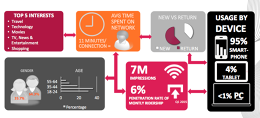through 2018, every underground subway station in big apple with have cellular service and Wi-Fi. The equipment on this secret basement will preserve riders related.
could 19, 2015
For a second, it looks like i’m being lured into a trap. typically, once I arrive to meet somebody for an interview, i am no longer required to weave thru a maze of parked vehicles in the back of a nondescript constructing in an unfamiliar a part of Queens. but lately is completely different. i have been requested to keep the location of the interview secret, and for good cause.
Upon coming into the constructing, i’m surrounded by means of rows of routers, wi-fi connectivity equipment, and fiber-optic cables. The room has a low hum and the feel of a mini data center, nevertheless it’s not storing bits. as a substitute, this secluded basement is pushing mobile broadband and Wi-Fi service to 30 completely different subway stations all over Queens. presently eighty four stations throughout the subway device has at the least a Wi-Fi hotspot; within three years, my guide stories, every underground subway station in New York city will have cell and Wi-Fi signals powered by one of these base stations.
this is considered one of 5 such rooms maintained with the aid of Transit wi-fi, the new York-based totally company shaped to provide the large Apple’s lengthy late underground web access. The agency is a subsidiary of Australian telecom Broadcast Australia, which received a contract with the Metropolitan Transportation Authority (MTA) in 2007 to design and construct out the underground networks for all four main carriers and maintain the infrastructure for 25 years. they are additionally constructing their very own fiber-optic Wi-Fi community, in order to be on hand to subway riders for free, provided they don’t mind seeing a few banner commercials when they login. In April, the company said 3.3 million Wi-Fi logins, a report number for its network.
As you might imagine, outfitting a crowded, century-old underground transit device with the most recent wi-fi expertise is no simple feat.
“These subways have been built one hundred years in the past, in order that they’re no longer the nicest environments to be hanging infrastructure in,” says Nathan Cornish, director of RF Engineering for Transit wireless. “a major a part of it is finding out the place we can mount equipment and where we can run equipment.”
The contractors installing this expertise have to account for issues like excessive temperatures, potential water injury, metallic mud from the train brakes, and the safety of passengers—not to point out the problem of weaving their work round trains that virtually never stop working. on account of the environmental elements like climate and steel dust, the whole thing Transit wi-fi installs within the stations needs to be sealed shut. it is usually why many of the hardware needs to be housed in climate-managed rooms just like the one Cornish is exhibiting me.

The Transit wi-fi base station resort in Queens is divided into four major sections, each and every one containing networking hardware belonging to Verizon, AT&T, dash, and T-cell. A fifth component to the room has stacks that each and every service has loaded this room with, equipment helping their current networks: 3G, 4G, and LTE. Some carriers are already putting in gear to strengthen the next generation of networks, so when LTE goes out of favor, subway riders won’t be left behind.
constructing out advanced underground infrastructure requires taking a long-term view. “now we have to future proof as a lot as we see today,” says Cornish. “otherwise we would be continuously taking down the network and spending more cash on it. Our gadget is versatile sufficient to add and amplify. We’ve built some additional capacity in there so that we are able to do that kind of thing.”
Distributing sign in all places Underground (virtually)
each and every carrier’s base station generates a radio sign, which is then converted into optical signals and then, alongside Transit wi-fi’s personal Wi-Fi network, is bored stiff under the city streets thru ducts containing fiber-optic cables. These cables snake all the way through the city, connecting the bottom station hotels to every subway station, where the indicators are converted to RF and wirelessly beamed throughout the structures from an array of strategically placed antennae. For riders, all of that invisible complexity manifests itself as something they’ve been yearning for: a pair bars of cell provider. Or at the very least, a free Wi-Fi sign.
every other benefit of distributing the community infrastructure into rooms like this one is simplicity. When there are concerns, technicians from the carriers can simply go to considered one of 5 areas to troubleshoot them, somewhat than coping with the chaos of navigating dozens of overcrowded subway systems unfold out across the city.

by splitting the infrastructure into 5 secret places, Transit wi-fi reduces the possibility of a bad actor (be it mother Nature or any individual else) removing the whole machine without delay. that is vital as a result of these networks is not going to simply be used to Instagram selfies from the structures and read the information; they’ll let individuals name 911 and communicate in emergency eventualities.
The machine is not with out its drawbacks, however. due to the logistical problems with putting in hardware underground, Transit wireless will not be putting in get admission to points within the subway tunnels originally. now not notably, safely putting in place these networks in the tunnels would require the MTA to periodically halt train visitors, which not like most other underground methods, runs just about constantly. As badly as smartphone-addicted commuters wish to tweet, textual content, and Tinder from the educate, Transit wi-fi and the MTA determined that these luxuries failed to but justify main disruptions in subway carrier and the associated prices.
because of this, commuters may even see indicators come and go between stations, relying on how some distance apart the stations are. it might no longer matter if you are studying a prolonged information article or looking at cached transit guidance. however streaming songs or gazing movies could quickly get demanding. alternatively, as soon as service becomes continuous, the prospect of subway automobiles filling up with phone conversations will possible carry its own annoyances.

Cornish says Transit wireless is set to work out a way to build provider into the tunnels as soon as the stations are fully connected. “It’s an extraordinarily costly and timely course of,” he says. “however it is going to occur.” within the intervening time, they are experimenting with ways to beam alerts down the tracks as far as they may be able to, and are making an allowance for constructing Wi-Fi provider instantly into teach vehicles.
The $200 million project is contractually slated to be finished through 2018, despite the fact that Cornish is assured that they may be able to beat that time limit and get the whole lot up and running by 2017. That price, which is privately funded via Transit wi-fi, is offset partly via fees paid via the carriers to be part of the program (and to house their tools within the community’s base station resorts). further revenue comes from advertisers who will pay to run display commercials on the signal-in display for the subway Wi-Fi, in the hopes of attracting the eyeballs of one of the vital system’s 5.5 million day by day riders.
The NY city Subway, which opened in 1904, is not the nation’s only underground gadget with cellular and Wi-Fi service. different programs with full or partial connectivity include BART within the Bay space, Washington, D.C., Boston, and Philadelphia. officials in Chicago say that an ongoing improve of its subway wi-fi gadget to 4G networks would make it the largest U.S. public transit gadget with 4G coverage in all subway stations and tunnels, a aggressive benefit that might appeal to new industry.
As of nowadays, about one hundred twenty of 279 stations in NY city are completed, including older and logistically difficult spots like 14th boulevard station and Grand relevant. Brooklyn will comprise the final phase of the build-out, partly on account of the underground depth of one of the crucial stations and the way a ways apart a lot of them are. Most lately, the massive Fulton middle in downtown ny used to be introduced to the list of connected stations. but simply because Transit wi-fi has accomplished its phase does not imply all riders will see mobile indicators yet, for the reason that carriers are rolling out their networks independently. For now, the one thing Transit wireless can guarantee when a given station is completed is the availability of Wi-Fi on the subway systems.
elsewhere underground, Instagram-addicted New Yorkers should simply wait.
(140)